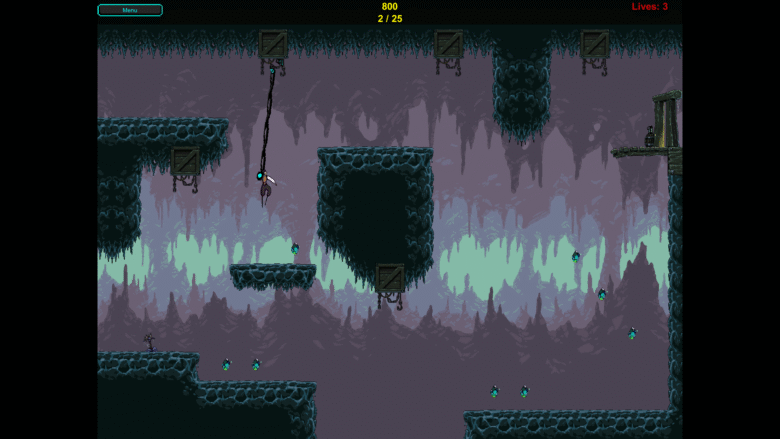Over the past few decades, developments in game engines have revolutionized the way video games are created. These powerful software frameworks have evolved from 2D rendering systems to real-time 3D engines with photorealistic graphics, dynamic physics, and realistic artificial intelligence (AI). The rise of technologies like Unreal Engine, Unity, CryEngine, and Godot has made it easier for both independent and studio developers to create games. Game engines have become an ecosystem that shapes the creation, distribution, and experience of games. As game technology continues to develop, the evolution of game engines can reveal market trends. The evolution of game engines from retro sprites to ray tracing and virtual reality reflects both technological and artistic advancements.
The Origins of Game Engines
Initially, there were no universal game engines for game creation. Games were created from scratch using game-specific programming. Developers built visuals, physics, input systems, and sound from scratch. Simple, hard-coded games with logic like “Pong” and “Space Invaders” were driven by these engines. The late 1980s and early 1990s saw the emergence of reusable game development frameworks. The Doom engine from Id Software, released in 1993, was one of the first game engines. It was a modular framework that separated content from code. Developers could add levels and mods without changing the game. This milestone heralded a trend that transformed the industry.
The Rise of 3D and Modular Game Engines
Following the success of Doom and Quake, game engines became modular and supported level editors and modding communities. To transition to 3D, engines had to manage complex rendering, physics, and animation systems. The Unreal Engine (released in 1998) offered powerful features for generating complete 3D environments without having to code every element. Around the same time, proprietary engines developed by major studios began to evolve into flexible tools that were suitable for multiple projects. The emergence of middleware provided developers with instantaneous tools for sound design and physics simulation. The late 1990s and early 2000s coincided with an important period of engine innovation and competition.
The Democratization of Game Development
One of the breakthroughs of the 21st century was the accessibility of games. Unity (released in 2005) broke technical barriers with its user-friendly interface and multiplatform support. Independent developers can now create high-quality games without significant investments or a dedicated engineering team. Unity’s asset store and open community allow developers to share tools and assets. With the launch of Unreal Engine 4 and 5, Unity made the engine available for free, with a royalty-based subscription. This ease of use enabled thousands of game developers to publish their games on Steam, mobile app stores, and consoles, ushering in a new era of creativity. Game jams, crowdfunding, and early access campaigns flourished thanks to this simple engine.
Innovations in Graphics and Performance
Modern game engines have pushed graphical quality and performance beyond the development world. Ray tracing, real-time lighting, motion capture integration, and photogrammetry are now the norm. Epic’s Unreal Engine 5 sets the standard for geometry and lighting with Nanite and Lumen. Unity’s HDRP delivers console-quality graphics across a wide range of platforms. Meanwhile, proprietary engines like Capcom’s RE Engine and Guerrilla Games’ Decima offer hardware-level performance, particularly suited for AAA titles. These advancements allow creators to focus on storytelling and gameplay without worrying about technical issues.
Platform and Cloud Integration
Modern game engines support multiple platforms. Once built, developers can deploy their games across PC, mobile devices, consoles, and online platforms. Unity and Unreal support cloud-based multiplayer servers, analytics, and real-time collaboration. Cloud gaming services like NVIDIA GeForce, Xbox Cloud Gaming, and Google Stadia (now defunct but influential) are forcing game engines to adapt to streaming. With the rise of 5G and edge computing, cloud-native game creation has become a necessity. Cross-platform adaptability can reduce production costs and expand market reach for developers of all sizes.
The Role of Open-Source and Community-Driven Engines
Developers who value transparency, control, and community engagement are choosing open-source engines like Godot over commercial engines. Godot is known for its lightweight architecture, ease of use, and active developer community. The MIT license gives developers full control over the source code, making it ideal for educational and independent applications. These engines allow developers to customize the engine and enrich the development ecosystem. They foster innovation by allowing developers to experiment without the need for proprietary licenses and royalties.
The Future of Game Engines
Future game engines rely on emerging technologies. Artificial intelligence is increasingly being used for animation automation, creating dynamic NPC behavior, and developing game objects. VR and AR are driving engines to deliver realistic, lifelike experiences. Intelligent, flexible, and machine learning-driven engines are emerging. Real-time collaboration, procedural creation, and no-code development are becoming increasingly popular, lowering the barriers to entry. As engines become platforms for interactive 3D experiences, the lines between game engines and other sectors like architecture, entertainment, and education are blurring. The next generation of game engines will transform the way we learn, work, and interact online.
Conclusion
Game engines have evolved from rigid, hard-coded systems. Dynamic, powerful platforms allow developers to create stunning, complex, and cross-platform experiences. This development has made game creation more accessible, imaginative, and technologically advanced. Game engines are now accessible to everyone, from independent developers with big dreams to AAA studios with enormous budgets. Game engines leverage artificial intelligence, cloud computing, and immersive technologies to shape interactive media. Understanding the history and development of these engines provides not only technical knowledge but also insight into the future of games and digital experiences. Today’s developers possess an unprecedented array of tools to expand the frontiers of gaming.
FAQs
1. What is a game engine? Why is it important?
A game engine is a software framework used to create games. Developers can use its visual effects, physics, sound, scripting, and other features to efficiently build complex games.
2. Which game engine is best for beginners?
Unit is recommended for beginners because of its simple interface, extensive documentation, and large community. Godot is also a beneficial open-source option.
3. How have game engines evolved?
Modern 3D game engines offer features such as real-time lighting, AI integration, physics simulation, and cross-platform support, enabling more realistic and interactive experiences.
4. Are game engines the only tools for creating games?
No. Because they can generate dynamic 3D scenes in real time, game engines are also widely used in architecture, education, simulation, film, and virtual production.
5. Can I create a successful game without programming?
Many engines offer drag-and-drop interfaces and visual scripts. While programming can add flexibility to games, Unity and Unreal allow non-programmers to build games without it.




